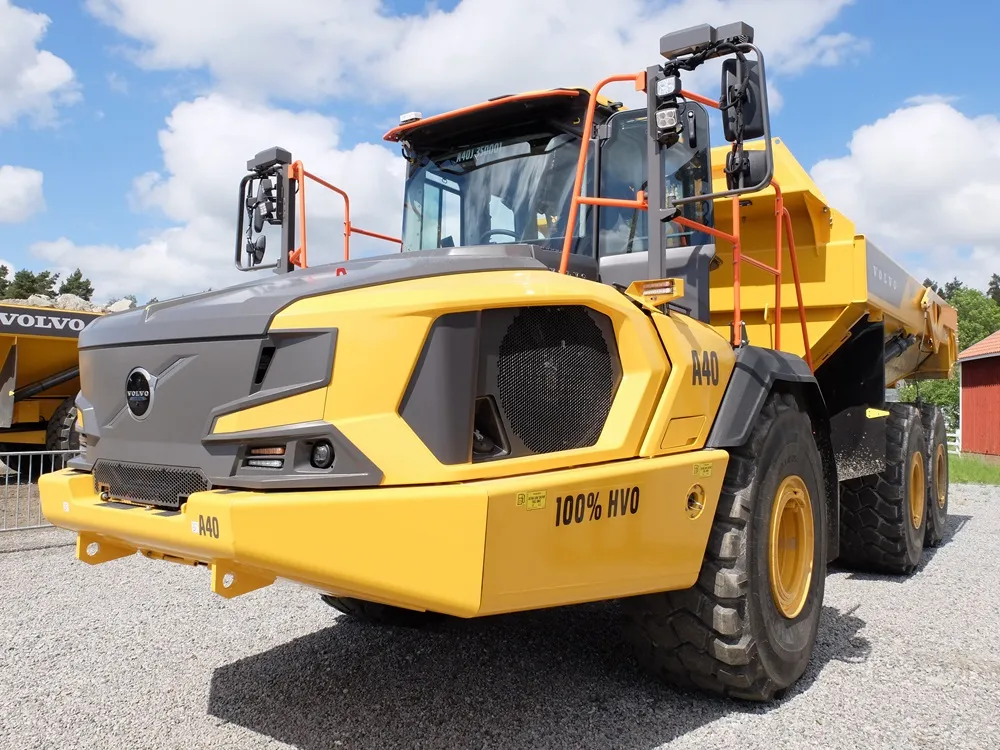Corporate results from a series of equipment manufacturers for the early part of 2011 all seem to agree that demand for machines continues to improve.
February 21, 2012
Read time: 3 mins
Corporate results from a series of equipment manufacturers for the early part of 2011 all seem to agree that demand for machines continues to improve. Following the collapse in demand for construction machines in 2008 and 2009 triggered by the banking crisis, manufacturers faced leaner production output and revenues. However this situation is now changing for the better. Data from recent major construction equipment shows such as CONEXPO-CON/AGG 2011 further highlight the steadily improving prospects for the manufacturers.
For the equipment manufacturers the improving balance sheets will come as a relief. When it struck, the recession impacted hard on construction machinery sales worldwide. This dropped almost catastrophically from a high of $100 billion in 2007 to just $55 billion in 2009, according to figures from equipment data specialist Off Highway Research.
The latest information shows that the so- called BRIC nations, Brazil, Russia, India and China, will fuel the demand for construction machines. These countries all have massive infrastructure programmes in place and this represents a significant change, with demand from these four nations proving of greater international importance than that of North America and the1116 European Union. In the past, the US has been the prime worldwide market for machine sales, but no longer.
This dramatic shift in the market was highlighted by David Phillips, managing director of Off Highway Research, when he spoke at the UK's Construction Equipment Association (CEA) annual general meeting recently. He said, "In the next three years we will see a recovery in Europe and North America but the landscape has changed." Phillips said, "China was almost unaffected by recession." The country is undergoing an, "...enormous construction boom," while he added that a similar construction boom is being seen in India and that it came quickly out of recession after a short term blip triggered by the worldwide banking crisis. In India the ambitious highway building programme will drive the country's construction industry. Phillips said, "It will be big and fast and it must be completed by excavators and wheeled loaders." For the developed nations, Phillips said that markets will improve but not on the scale seen before and that Asia in particular will remain the dominant growth area. This will be led by China and India but with other developing economies such as Indonesia and Vietnam also growing fast. With Chinese manufacturers now looking to export to boost revenue, it is clear that the US and the European Union will not be the prime target markets for sales, as the sales potential is comparatively small and competition is fierce from established manufacturers with strong dealer networks. Instead the real sales potential for Chinese manufacturers lies in the developing nations.
For the equipment manufacturers the improving balance sheets will come as a relief. When it struck, the recession impacted hard on construction machinery sales worldwide. This dropped almost catastrophically from a high of $100 billion in 2007 to just $55 billion in 2009, according to figures from equipment data specialist Off Highway Research.
The latest information shows that the so- called BRIC nations, Brazil, Russia, India and China, will fuel the demand for construction machines. These countries all have massive infrastructure programmes in place and this represents a significant change, with demand from these four nations proving of greater international importance than that of North America and the
This dramatic shift in the market was highlighted by David Phillips, managing director of Off Highway Research, when he spoke at the UK's Construction Equipment Association (CEA) annual general meeting recently. He said, "In the next three years we will see a recovery in Europe and North America but the landscape has changed." Phillips said, "China was almost unaffected by recession." The country is undergoing an, "...enormous construction boom," while he added that a similar construction boom is being seen in India and that it came quickly out of recession after a short term blip triggered by the worldwide banking crisis. In India the ambitious highway building programme will drive the country's construction industry. Phillips said, "It will be big and fast and it must be completed by excavators and wheeled loaders." For the developed nations, Phillips said that markets will improve but not on the scale seen before and that Asia in particular will remain the dominant growth area. This will be led by China and India but with other developing economies such as Indonesia and Vietnam also growing fast. With Chinese manufacturers now looking to export to boost revenue, it is clear that the US and the European Union will not be the prime target markets for sales, as the sales potential is comparatively small and competition is fierce from established manufacturers with strong dealer networks. Instead the real sales potential for Chinese manufacturers lies in the developing nations.









